Chris & Allyson vs. Europe (2017)
Portugal Day Five: Douro Valley by car. Regua and a detour. Pinhao. Quinta do Bomfim and port wine.
I'm not fluent in Portuguese, but I'm confident that "Oporto" translates roughly to "the port." Porto is strategically located where the Douro River empties into the Atlantic Ocean.
You're probably wondering what came down the Douro. Rivers and oceans were the highways of the pre-20th-century world, allowing the ancient equivalent of long-haul truckers to spread commercial products across the globe.
Well, there was a product special to the Douro Valley. The strange "microclimate" of the region made it ideal for growing grapes. Those grapes could be turned into tasty sweet wine, which could survive the hardships of pre-20th-century maritime transport. People from all centuries love alcohol, so this special wine from the Douro soon became legendary. Thinking long and hard about what to call it, the Portuguese council of elders finally decided on a name:
Port.
The Portuguese council of elders was not clever. But in their defense, they were probably bombed out of their minds on high-ABV dessert wines.
Port is still a thing in the 21st century, and the Douro Valley holds a place of distinction as the "Napa Valley" of the Iberian peninsula. Any guidebook will tell you that there is beautiful scenery and excellent wine. There are a few ways to see the Douro. You can take the "wine train" from Porto, or you can cruise up the river on a slow boat.
You can also drive your totally awesome BMW. Internet research suggested that the Douro Valley has some of the most stimulating roads in Europe: winding, two-lane strips of asphalt surrounded by scenery so pretty that you are almost certain to run off the road at some point. One publication named the N222 -- connecting the towns of Regua and Pinhao -- as the "best driving road in Europe." And it's probably even more exciting if you've had two or three glasses of wine.
Allyson and I decided to drive the Douro Valley, for a day trip that wouldn't involve any castles, monasteries or palaces. It was finally time to live life like the middle-aged white people in independent films. We woke up early, ate a hotel breakfast, got in the car and headed east on the A4. After leaving Porto, we were on highways for a bit. The urban landscape disappeared, replaced with rugged rolling hills north of the river. The cloudy skies also disappeared, as the legendary microclimate of the valley took over. When we got to the appointed exit, we turned south toward ADVENTURE!
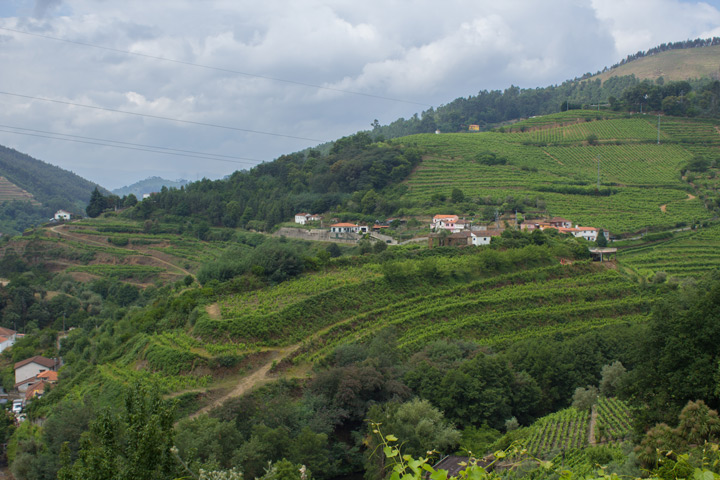
Sweet scenery makes for sweet wine. Welcome to the Douro Valley.

A peek at the Douro River, the highway for dessert wine. God bless it.
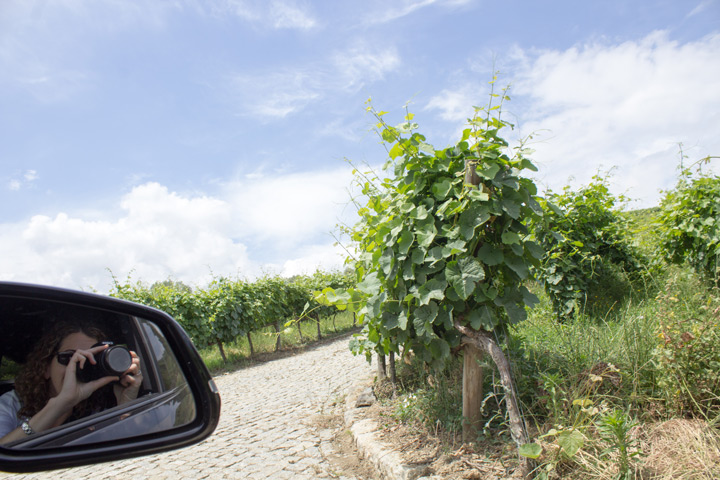
GPS takes us into a very small, very not public vineyard.
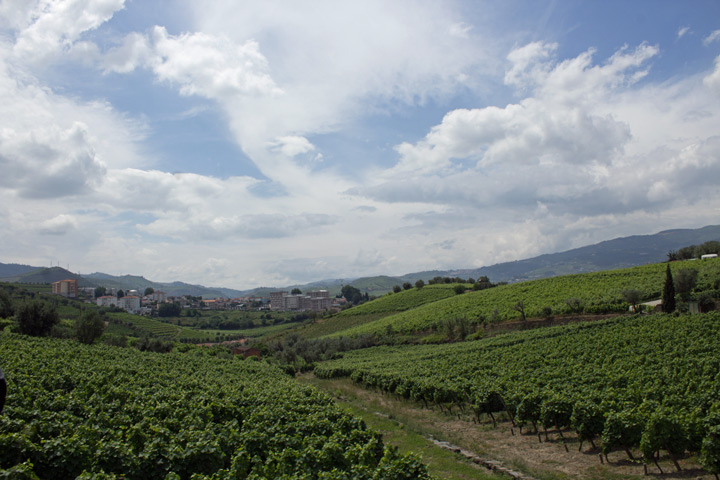
They do got the grapes. A great vista in the Douro Valley.
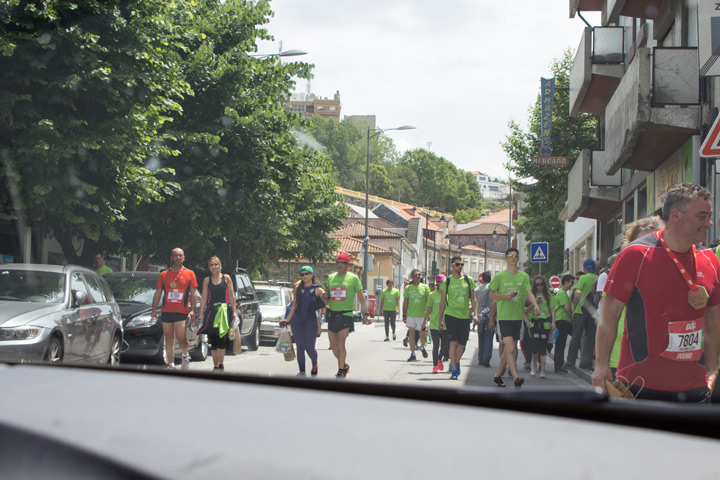
The road race that ruined (or at least changed) our plans.
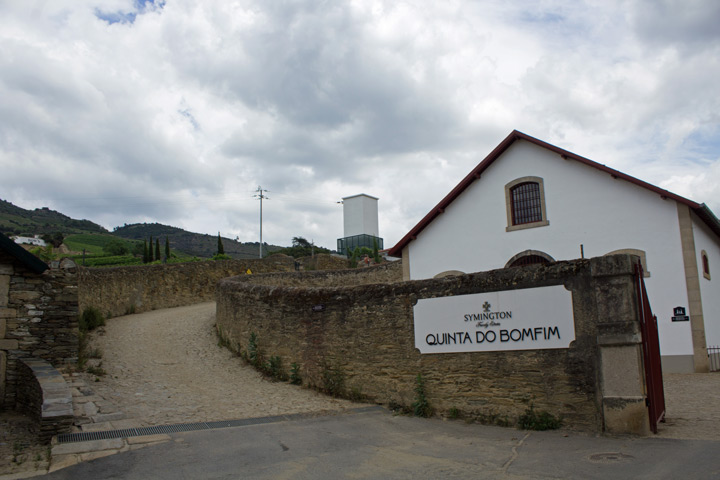
Finally, a winery! Stopping in to get a closer look at production.
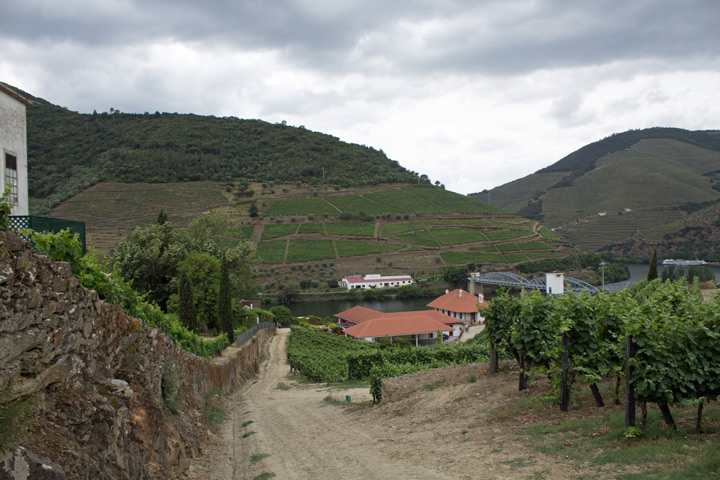
We missed any tours, but they did let us walk around unsupervised. Pretty!

The vines of Quinta do Bomfim.
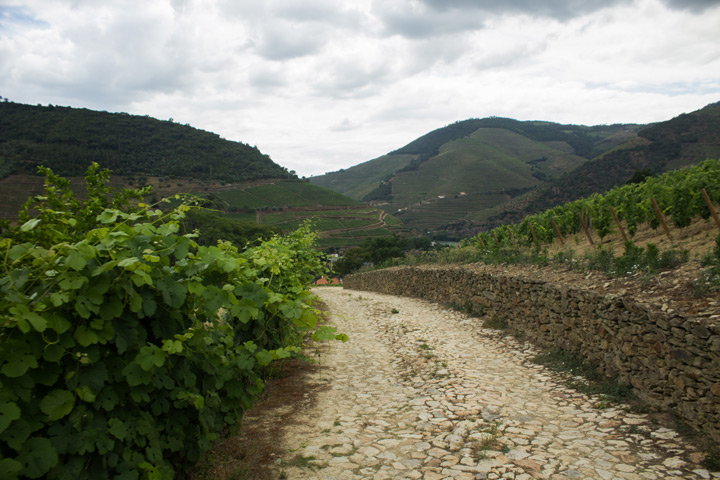
You can take the road less traveled. We'll take the road through the winery.
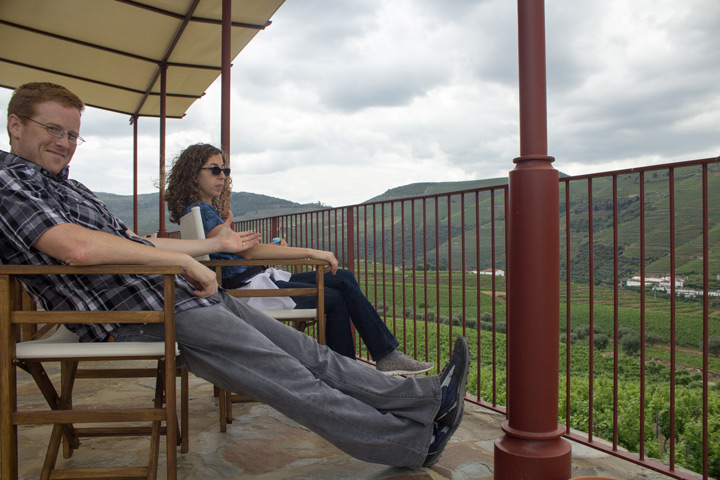
Sampling the product before heading back to the big city.
Here was the plan: We'd meet up with the Douro at Regua, the unofficial capital of wine country. It's a town mostly on the north bank of the river, and for centuries it was the staging area for the final trip to the coast. From Regua, we would drive along the N222 to Pinhao, enjoying the most glorious countryside we had ever seen. From Pinhao, we would wing it, going further into wine country or heading back to the highway, depending on how the day was going. Along the way, we'd stop at any winery that looked inviting.
Here was the reality: After a stunning drive from the highway down to Regua, we discovered that the N222 was closed. There was some kind of road race happening that Sunday, and apparently everyone in the Douro Valley was participating. We had to cross the river to go farther east, but the bridge at Regua was closed to vehicle traffic. Traffic cops helpfully directed people to nowhere in particular. And when you're trying to figure out an alternate route, a cop who speaks English as a second language isn't all that useful.
We did a few laps around Regua, laughing and (sort of) crying as we tried to figure out what was going on. We asked the GPS to find another way across the river ... and that's when we discovered that the GPS considered every dirt road on every winery to be drivable. We wound up on someone's farm, almost definitely trespassing. We somehow turned around and got back to one-lane, two-way streets on the side of a very steep hill. It was as funny as it was frustrating.
Waiting for tomorrow wasn't an option, so we devised a new plan. The GPS guided us back out of the valley to the nearest highway. Then we cruised east until we hit an exit that would take us back downhill to Pinhao. We were going to do this trip in reverse, with the hope that Portuguese fun runs don't last all day. We were going to see the wine country, dammit.
And realistically, we did. The Douro Valley is amazing. The winding river is flanked by steep hills on both banks. Over the centuries, the locals have learned to cultivate every inch of arable land. There are terraced farms that extend from the river banks (with some margin of error for floods) to the hilltops. They follow every contour of the earth, creating a landscape that is both organic and orderly. This goes on for miles and miles. It's unlike anything I've ever seen.
We made it to Pinhao, a tiny and ramshackle town on the south bank of the river. We parked the car and grabbed sandwiches in the sleepy local café. (It was Sunday, and everything in Catholic Portugal is sleepy on a Sunday; on top of that, since we were away from the big city, the language barrier was more formidable. But we still got some cheese sandwiches.) Since we wanted to see a vineyard, we rolled the dice on the vineyard in town.
Quinta do Bomfim is part of the "Symington" family. A bunch of the Douro Valley vineyards are owned by foreigners -- for example, the Symingtons are Scottish. The family owns 27 wineries, and they have a rich history that isn't particularly memorable aside from being Scottish people who own a Portuguese winery. You need to make a reservation to get the full tour experience, complete with the rich backstory of cultural appropriation by British citizens. But if you walk in, they'll let you stroll around the vineyard unsupervised.
That's a cool thing to do. We saw the terraces up close and strolled along the rows of grapes. We saw citrus groves, where they cultivate fruits that help temper a wine's flavor. We intruded upon the swimming pool at the vineyard's guest cottage, where really rich people probably stay on their Scots-Portuguese wine charter tours. We saw no other human beings during our inspection, making this the most private tour we experienced on our entire vacation. Since neither one of us wanted a 20-minute lecture on wine-making, it was the perfect way to see a vineyard.
We wrapped up by having glasses of Qunita do Bomfim port on their delightful patio. Boats were cruising by on the river; the "wine train" was rolling past on the banks; and clouds were drifting overhead. My wife surpassed all expectations by having an entire class of wine by herself. She's an animal on vacation.
The N222 was open for the late afternoon, so we did enjoy Europe's "greatest driving road" on the way back to Porto. It wasn't all that spectacular -- the drive down to Pinhao was better -- and the experience wasn't improved by the thousands of water bottles and half-eaten oranges that fun-runners tossed on the shoulder of the road. We made it back to Regua, then out of the valley and up to the highway.
Back in Porto, it was raining. The "microclimate" couldn't protect us any longer. Our search for vegetarian-friendly restaurants was complicated by the fact that in very Catholic Portugal, lots of stuff is closed on Sunday. We walked a little bit before settling on the "Sins Sandwich" shop, a not-bad but not-glamorous spot where Allyson could actually eat. There was dining, and strolling, and a return to our hotel. It was a full day, with almost no historical learning and a little bit of wine. A good day, to be sure.
